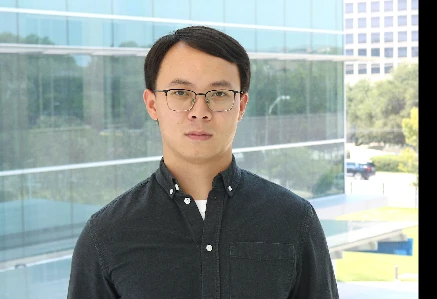Main Session

Sep
29
PQA 06 - Radiation and Cancer Biology, Health Care Access and Engagement
3054 - A Novel Physicochemical Model to Elucidate the Mechanism of FLASH Radiotherapy and Identify Optimal Conditions for Sparing Normal Tissue Toxicity
Presenter(s)

Lixiang Guo, MS, BS - UT Southwestern Medical Center, Dallas, TX
L. Guo, and K. K. H. Wang; Biomedical Imaging and Radiation Technology Laboratory (BIRTLab), Department of Radiation Oncology, UT Southwestern Medical Center, Dallas, TX
Purpose/Objective(s):
FLASH radiotherapy (RT) mitigates normal tissue toxicity without compromising tumor control, but its underlying mechanism remains unclear. FLASH tissue sparing could be influenced by dose (D), dose rate (DR), reactive oxygen species (ROS), oxygen (O2) dynamics, and tissue type. Given the rapid physicochemical reactions during irradiation, computational modeling is essential to elucidate these mechanisms. We will develop an advanced physicochemical model to investigate the correlation between ROS yields and O2 depletion with normal tissue complication probability (NTCP) in FLASH and conventional (CONV) RT, using published data (skin, intestine, brain) and our own spinal cord studies. Our goal is to identify key species and optimal conditions driving FLASH sparing.Materials/Methods:
We built upon the work of Labarbe et al. to simulate the physicochemical process following (1) water radiolysis, (2) radical interaction with intracellular O2 to form species, and (3) radical interaction with biomolecules, where Alkyl radicals (R•) reacts with O2 forming ROO•, leading cellular damage. This reaction also competes with radical recombination, which may differentiate FLASH and CONV-RT in normal tissue sparing. In addition to ROO• and O2 depletion, we will also track hydroperoxide (ROOH), another marker of radiation damage, and H2O2. Moreover, O2 resupply and radiation pulse structure will also be included. The differential equations describing the time-evolved physicochemical processes will be solved numerically. We will fit the production of species of interest, such as ROOH, ROO•, H2O2 or depletion of O2 to NTCPs for FLASH and CONV-RT as function of D, DR and initial O2. We hypothesize that this approach will allow us to identify optimal conditions leading to the FLASH effect. To further advance our capabilities in studying FLASH mechanism for specific tissue, we will incorporate vascular structure, such as the spinal cord microvascular. Damage to the vasculature is known to contribute to spinal cord toxicity. This will allow us to examine if the spatially resolved ROS distribution plays the role in determining FLASH effect in addition to the NTCP investigation.Results:
At an initial O2 of 50 µM, we observed that CONV-RT (0.1 Gy/s) resulted in greater ROO• accumulation (µM·s) and ROOH yield (µM) than FLASH-RT (400 Gy/s). The difference is more pronounced at higher doses, with a 69% higher ROOH yield at 20 Gy compared to 12% at 5 Gy, aligning with experimental evidence that the FLASH effect occurs above a dose threshold. Furthermore, ROO• accumulation and ROOH yield correlate with the crypt survival ratio of C3H mice after FLASH whole abdomen irradiation (7.5-20 Gy) based on a NTCP (R2=0.99). These findings suggest ROO• and ROOH may drive FLASH sparing.Conclusion:
We expect the physicochemical model integrating a wide range of ROS and O2 dynamics combined with NTCPs would support us identify key species and potentially inform optimal conditions leading FLASH sparing.